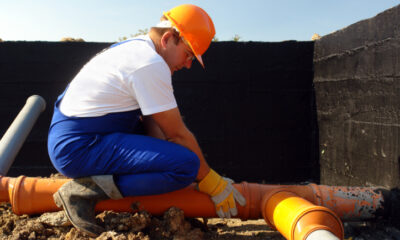TECHNOLOGY
Exploring the Iconic Colt Python: A Guide for Owners
Lauded by enthusiasts, and cherished by collectors, the Colt Python stands as one of the most revered firearms in history. As a proud owner, you’re part of a legacy that captures the hearts of many for its craftsmanship, performance, and timeless design. This extensive guide is not just about the machinery you possess; it’s a homage to the legends who wielded it and the community it has fostered.
Understanding the history of the Colt Python is to delve into an era where revolvers were not just tools, but symbols of an American way of life. First introduced in 1955, the Python was envisioned as a premium revolver and quickly established itself, praised for its precision engineering and smooth trigger pull. Its distinctive full barrel underlug, ventilated rib, and royal bluing became hallmarks that connoisseurs admired. Even today, the Python’s flawless balance and aesthetic appeal evoke a sense of nostalgia for a bygone era of craftsmanship.
Unfurling the Python’s Past: A Legacy in Lead
A Storied History in the Hands of Legends
The Colt Python’s legacy reaches deep into history with roots firmly planted in the Colt’s Manufacturing Company, a pioneer in the production of revolvers. Famed for its association with law enforcement and the broader American culture, the Python has become a symbol of status and skill, influenced by its iconic use in film, television, and by renowned marksmen.
The Python’s Entry Into the World
Debuting in 1955, the Colt Python was crafted to be a premium pistol, an upgrade from the company’s earlier magnum revolvers. Its birth coincided with the post-war era’s renewed interest in hunting and target shooting, offering exceptional accuracy and a luxurious feel. The Python’s sleek lines, robust construction, and innovative features quickly set it apart, making it a household name in the firearms community.
Evolving Through the Decades: The Python’s Transformation
The enduring appeal of the Colt Python can be seen in its evolution through the decades. Changes in manufacturing processes and materials reflected both advances in technology and the changing tastes of firearm enthusiasts. From the original models of the 1950s to the reintroductions and modifications seen in later years, each Python carries the DNA of its ancestors while showcasing the innovation of its time.
The Python and Law Enforcement: A Symbol of Authority
Gaining traction in the 1960s and 70s, the Colt Python became synonymous with law enforcement, with many police departments issuing them to officers. The revolver’s reliability, power, and accuracy made it an ideal service weapon, and it played a significant role in both the professional and cinematic portrayal of the American police force.
The Collectors’ Pride: The Python in the Modern Era
In recent years, the Colt Python has seen a resurgence, with collectors and enthusiasts seeking out both classic and contemporary models. This section of the guide will delve into the factors that make the Python a prized possession among collectors, including its rarity, craftsmanship, and the stories behind individual pieces.
Revival of a Legend: The Python’s Contemporary Rebirth
With the 2020 relaunch, the Python was reintroduced to a new generation of firearm enthusiasts. This modern incarnation preserves the original’s aesthetic and mechanical integrity while incorporating contemporary metallurgy and technology to meet today’s standards. We will explore how the revived Python stays true to its roots while aiming at future innovation.
Mastering the Python’s Makings: Features and Specifications
Understanding your Python means dissecting its very being—examining every part, every attribute, and every specification that makes it a legend in its own right.
The Barrel: More than Just a Tube
In a Colt Python, the barrel is more than the vessel from which a bullet launches—it’s a precision-engineered tube that dictates the revolver’s accuracy. Do you have a 2.5-inch snub nose with quick-action capabilities or the potent 8-inch variant, ideal for long-range shooting?
Decoding Caliber: Python’s Raw Power
The Colt Python’s .357 Magnum and .38 Special chamberings give it the versatility to excel in various shooting roles. As a Python owner, you’ll grasp the nuanced differences between each caliber’s ballistics and effective ranges.
A Smooth Operator: Understanding Action Type
Double-action and single-action firing mechanisms tell a story of versatility and control. Mastering both is a rite of passage for every Python owner, influencing the weapon’s performance in speed shooting or precision aiming.
The Anatomy Lesson Continues: Materials Matter
The Python’s unique blending of steel and ergonomically formed grips is a manifestation of form the following function, ensuring durability without compromising comfort or aesthetics.
Developmental Phases of the Colt Python
From its inception, the Colt Python underwent various developmental phases, each marked by advancements in technology and shifting user preferences. These phases reflect Python’s journey from its early conception to the iconic status it holds today. We will chronicle these developments and understand how incremental changes and significant transformations contributed to the revolver’s enduring legacy.
The Conception: Pythons’ 1955 Origin
The Colt Python’s origin dates back to 1955, born out of a quest for high-end craftsmanship. This phase was marked by meticulous attention to design, introducing the solid build and aesthetic lines that would become its trademark.
The Rise to Prominence: The 1960s and 70s
As the revolver gained favor with law enforcement and on the silver screen, its prominence grew. This phase saw the Python become a cultural icon and a fixture in police holsters across the country.
Evolution and Adaptation: The 1980s and 90s
Through these decades, Python adapted to changes in manufacturing technologies and materials. The design remained largely consistent, but production methods and quality saw variations due to cost and modernization efforts.
The Collector’s Era: Early 2000s to 2019
The turn of the century marked the beginning of the collector’s era for the Colt Python as production slowed and eventually ceased. During this phase, Python’s mystique grew, embodied as a collector’s piece, and values began to rise correspondingly.
The Rebirth: 2020 and Beyond
In 2020, Colt rebooted Python production, introducing models that resonated with the original’s spirit but incorporated modern engineering. This phase is characterized by a blend of traditional appeal with cutting-edge firearm technology.
Polishing Your Python: Maintenance and Care
A Colt Python demands attention, care, and a touch of love to maintain its peak performance. Here, we unveil the secrets that keep your Python ready for action.
The Three C’s of Care: Cleaning, Conditioning, and Consistency
A thorough understanding of Python’s disassembly and cleaning process is the cornerstone of proper maintenance. Regular conditioning and consistent cleaning schedules safeguard against corrosion and wear, ensuring the Python remains as gorgeous as the day it left the factory.
The Art of Lubrication: Keeping the Python Smooth
Lubricating the Python’s moving parts is more than a matter of necessity; it’s a delicate dance between achieving the perfect amount of flow and preventing over-application that attracts dirt and fouling.
Safe-keep Your Steel Beauty: the Python’s Ideal Storage
Proper storage shields the Python from the ravages of time, moisture, and environmental factors. Delving into the intricacies of temperature control, humidity monitoring, and secure enclosures, this section ensures your valued asset’s longevity.
A Dance with Demons and Angels: The Shooting Experience
Owning a Colt Python is to experience a symphony of mixed emotions with the pull of a trigger. Its storied reputation precedes it, but what is it truly like to shoot?
A Concert of Precision: The Python’s Unfailing Accuracy
For many, the Colt Python’s standout feature is its ability to consistently punch tight groups. The harmonious relationship between the Python’s design and the skillful shooter is a testament to its name as a precision instrument.
The Taming of the Beast: Recoil Management
The Colt Python is known for its manageable recoil, a result of the revolver’s heft, and balance, and the .357 Magnum’s power being tamed by a tuned action. Shaping your grip and stance is the key to exercising that power without losing control.
Maneuvering the Marvel: The Python’s Intuitive Handling
Ownership of a Colt Python is a study in understanding balance, not only in its physical attributes but in the balance of its handling. The weight of the revolver is to be respected, but don’t be fooled— the Python moves under your command with grace and precision-colt python for sale.
Hoarding the Holy Grail: Collectibility and Value
The Colt Python is more than a sum of its parts; it’s a piece of history and a collector’s dream. As a Python owner, you’re one of the select few entrusted with a relic sought by many.
Rarity and Variations: The Quest for the Ultraprecious
Exploring the limited and special editions of the Python’s production line is akin to an archaeological dig. The rarer the find, the higher the ante, and Python has seen its fair share of bespoke artistry and thematic models that are as coveted as they are beautiful.
Market Trends: Python’s Economic Dance
With market trends as fickle as the wind, understanding the ebb and flow of the Python’s value is more than an exercise in finance; it’s a reflection of the gun’s status and desirability among collectors and shooters alike.
Investment or Enjoyment: Python’s Role in Your Life
Ultimately, the decision to view your Python as a cherished piece of history or a potential return on investment is a personal one. This section provides insight into the pleasure of ownership versus profit orientation.
Uncovering the Variants: A Look at Python Models
The Colt Python has been crafted in numerous forms, each bringing its own charm and unique features to the table. Devotees of the revolver avidly seek out these variants, from the impressive Royal Blue finish to the rarer Bright Stainless Models. Each iteration tells a story of the era it represents, the craftsmanship employed, and the evolving design that has kept the Python in the hearts of collectors and firearms enthusiasts around the world.
The Royal Blue Finish: A Regal Touch
The Royal Blue finish on a Colt Python is perhaps the most recognizable and sought-after by collectors. This deep, mirror-like blue surface isn’t just aesthetically pleasing but also functions as a layer of protection against corrosion. The meticulous process of achieving the Royal Blue finish is as much art as it is science, requiring skilled hand polishing and a refined bluing bath.
The Bright Stainless Model: The Dazzling Rarity
The Bright Stainless variants of the Colt Python, with their gleaming and resilient finish, are treasures within the revolver’s lineup. Stainless steel offers greater resistance to corrosion and minimal maintenance, making it a pragmatic choice without compromising on the Python’s signature allure.
The Combat Python: Designed for Duty
The Combat Python emerged as an answer to the needs of law enforcement and tactical use. Its ruggedness and reliability under stress, combined with a more subdued finish to avoid reflection, make it a variant that balances form with tactical function, colt python 4.25.
The Hunter Edition: Precision in the Wild
For enthusiasts of hunting and outdoor shooting sports, the Hunter Edition Pythons offer specialized features such as an 8-inch barrel, optics accommodation, and a reinforced frame to handle the extra stress from magnified scopes, designed to assist in taking consistent and precise shots on game.
The Boa: The Limited Companion
The Colt Boa is a limited production variant, blending elements of the Python and the Trooper MK V models. Only available in a 6-inch barrel configuration and two finishes —bright stainless and brushed stainless— the Boa was manufactured exclusively for a single distributor, adding to its exclusivity and collectibility.
The Python Elite: Modern Refinement
Introduced in the late 1990s, the Python Elite provided a modernized choice within the Colt lineup with improvements like a more durable stainless steel finish and updated internals. This variant was produced in both 4-inch and 6-inch barrel lengths, catering to a broader range of Python aficionados.
The Python Target: Bullseye Specialization
This variant is a fine-tuned machine made for competition shooting. The Python Target comes with an 8-inch barrel which facilitates better precision and stability, offering a substantial advantage in target acquisition and accuracy during shooting contests.
The Custom Shop Models: Unique and Unrepeatable
Colt’s Custom Shop creations are the pinnacle of individuality, offering bespoke customization for those seeking a Python beyond the standards. From intricate engravings to custom grips and unique finishes, these Pythons are as exclusive as they are exquisite.
The Fellowship of the Python: Community and Resources
Owning a Colt Python isn’t solitary; it’s a membership to a community bonded by a shared reverence for a revolver that has shaped lives and the world around us.
Online Forums: The Digital Campfires
In the vast expanse of the internet, Python enthusiasts congregate in forums to exchange stories, offer advice, and nurture camaraderie. This section highlights the most active and constructive online havens for all things Python-related.
Clubs and Events: The Physical Meet-ups
If digital discussions can be likened to a family dinner, then clubs and events are the grand banquets where Python aficionados celebrate their love for the revolver. Learn how to get involved, from joining local shooting groups to attending national events.
Maintenance and Troubleshooting: Preserving Your Python
Proper maintenance is paramount to preserving the beauty and function of any Colt Python. This section delves into common issues owners may encounter, providing troubleshooting tips and maintenance advice to ensure that these revolvers continue to operate with the dependability that they’re renowned for. Whether it’s addressing timing issues, tuning action smoothness, or preventing wear and tear, these insights will help you keep your Python in prime condition for years to come.
Addressing Timing Issues: Keeping Your Python Punctual
Python revolvers are precision machines, and timing is critical for safe and accurate firing. If you notice a delay or misalignment between the cylinder and the firing pin, it’s essential to cease firing and consult a professional. But for minor adjustments, consider checking the revolver’s bolt and handspring for signs of wear, ensuring that notches and teeth have not become rounded or damaged. Regular inspection and replacement of worn-out parts can help maintain proper timing.
Tuning the Action: Smoothness is Paramount
The Python is celebrated for its smooth trigger pull, but over time, action can become gritty. A detailed strip-down and cleaning can restore the smoothness of the action. Polishing the contact points—avoiding altering any surfaces impacting the revolver’s integrity—can also enhance the action’s fluidity. Light lubrication with quality gun oil after cleaning can keep the components operating smoothly.
Preventing Wear and Tear: The Art of Preservation
Frequent use can lead to general wear and tear, but there are steps to minimize this. Always use the correct ammunition specification to avoid excessive stress on the revolver’s parts. Store your Python in a cool, dry place, and use a silicon-treated gun cloth to protect the finish from moisture and fingerprints. When not in use, a properly fitted gun sock can prevent scratches and corrosion.
Dealing With Corrosion: Protect Your Investment
Corrosion can be a Python owner’s worst nightmare. To combat this, ensure that your Python is cleaned after every use, wiping down all metal surfaces with an oil rag to remove fingerprints, which can contain corrosive acids. In the case of rust development, gently remove it using fine bronze wool and oil, taking care not to scratch the underlying finish.
Revitalizing the Finish: Restoring the Python’s Shine
If your revolver’s finish is starting to show its age, a careful polish may be in order. For blued steel finishes like the Royal Blue, using a high-quality paste wax can enhance the luster. For stainless models, a good quality metal polish can help. Always follow up with a protective coating of oil to keep your Python looking its best.
Cylinder Lock-Up Inspection: Ensuring Safety and Reliability
A tight cylinder lock-up is crucial for precision shooting. Check the cylinder play by carefully shaking the revolver with the cylinder closed. If you notice excessive movement or an irregular noise, this can indicate lock-up issues, potentially affecting accuracy and safety. It might require adjusting the cylinder latch or consulting a gunsmith for precise realignment.
By adhering to regular maintenance and addressing minor issues promptly, you can preserve the functionality and beauty of your Colt Python, ensuring that it remains a reliable and cherished firearm for generations.
The Python’s Provocative Past: Reflecting on a Romance in Metal
The Colt Python transcends mere machinery; it embodies a rich history, a precise balance of art and function, and a steadfast community that keeps its legacy alive. To own a Python is to pledge allegiance to a tradition of excellence and to contribute to a story that’s still being written.
In the end, as an owner, Python is yours to define and share. What will your chapter add to its legacy? Whether you’re a seasoned owner or a new acolyte to the Python’s lore, the adventure of learning and experiencing this firearm is an evergreen pursuit. And as you continue to explore this intricate world of revolvers, remember that the Colt Python is more than a gun—it’s a passport to an ageless culture of craftsmanship, precision, and shared passion.
You Might Like: Exploring QXEFV Ancient Roots
Frequently Asked Questions (FAQs)
What makes the Colt Python different from other revolvers?
The Colt Python is renowned for its precision craftsmanship, smooth action, and aesthetic beauty. Its high level of accuracy and distinctive feel set it apart from other revolvers, making it a favorite among firearm enthusiasts.
What is the best way to maintain the finish of my Python?
Regularly clean and polish your Python with high-quality paste wax for blued finishes or metal polish for stainless models. Always protect the finish after cleaning with a light application of gun oil.
Are there any specific ammunition requirements for the Colt Python?
Yes, it’s important to use the correct ammunition specification recommended by the manufacturer to ensure the proper functioning and longevity of your revolver.
How can I learn about events or clubs for Colt Python enthusiasts?
You can find information about events and clubs in firearms magazines, online forums, and social media groups dedicated to Colt Python and revolver enthusiasts.
When should I consult a professional gunsmith for my Python?
If you encounter timing issues, abnormal lock-up play, or other complex problems that aren’t resolved by basic troubleshooting and maintenance, it’s best to consult a professional gunsmith.
Can I customize my Colt Python?
While customization is possible, it’s crucial to consider the potential impact on the revolver’s integrity and value. Consult with a knowledgeable gunsmith before making any modifications.
Remember, responsible ownership and a commitment to maintenance are key to preserving the legacy of your Colt Python and ensuring it remains a treasured asset for years to come.
TECHNOLOGY
A Greener Tomorrow: Sustainable Practices for Modern Septic Systems

Introduction
As we become more conscious of our environmental responsibilities, the role of septic systems in promoting a sustainable future is garnering significant attention. Septic systems, traditionally an unsung hero of environmental management, have begun to evolve with greener practices, such as advanced drain field services. These advancements aim to decrease waste management’s environmental impact significantly. This article discusses how implementing sustainable practices in septic systems protects natural resources and is a strategic step toward a healthier planet. In the past, septic systems were often neglected in discussions of eco- friendly practices. However, as the world increasingly recognizes wastewater management’s critical role in ecosystem health, the need for modernization becomes clear. Septic systems are evolving from essential waste processors into sophisticated, sustainable technologies. This shift aligns with global initiatives to reduce carbon footprints, conserve water, and ensure the systems remain efficient and reliable. The journey towards a sustainable world involves embracing these innovative solutions and ensuring our environmental goals are met with minimal disruption to everyday life.
Understanding Septic Systems
Septic systems perform a vital function by treating and disposing household wastewater in areas not connected to municipal sewer lines. A septic tank installation system typically comprises a septic tank separating solids from liquids and a drain field facilitating wastewater absorption into the soil. While conventional systems have served communities for decades, many need to be more efficient by modern environmental standards. The Environmental Protection Agency offers abundant information on upgrading these systems to meet current sustainability objectives, emphasizing the importance of wastewater management in conserving resources and reducing pollution.
The Rise of Sustainable Septic Solutions
As the need for sustainable solutions becomes increasingly apparent, the septic industry is witnessing significant innovation. These sustainable systems minimize water waste, enhance treatment efficacy, and reduce ecological footprints. They are engineered to operate quietly, efficiently, and harmoniously with their surroundings, preserving natural landscapes while supporting cleaner water cycles. Aerobic treatment units and advanced filtration systems represent a paradigm shift from merely functional to highly eco-friendly wastewater management practices. This trend shows a broader dedication to sustainability in various industries worldwide.
Benefits of Sustainable Septic Practices
Sustainable septic practices offer numerous benefits, encompassing environmental and economic dimensions. Environmentally, these innovations reduce pollution, conserve energy, and protect soil and water integrity. Economically, they present opportunities for cost savings through decreased water bills and reduced septic maintenance expenses. Modern systems are built for durability and efficiency, often outlasting traditional counterparts and requiring fewer interventions. As a result, property owners can expect lower overall costs and fewer disruptions. Additionally, investing in sustainable technologies can increase property value and marketability, providing another incentive for embracing eco-friendly septic solutions.
Ways to Practice Septic Sustainability
- Engage in routine septic inspections and maintenance to ensure optimal performance.
- Incorporate environmentally friendly household products to minimize chemical interference with septic processes.
- Adopt innovative technologies like low-flow fixtures and energy-efficient pumps that complement septic sustainability efforts.
- Promote water conservation through mindful usage practices, such as fixing leaks and encouraging shorter showers.
Implementing these strategies not only assists in maintaining the functionality of your septic system but also significantly reduces your environmental impact, contributing to a more sustainable future for all.
Common Challenges and Solutions
The transition to sustainable septic systems faces several challenges, including financial constraints, limited public awareness, and technical complexities. However, these obstacles can be managed with informed guidance and strategic planning. For example, communities can use government incentives and subsidies to help reduce the costs of upgrading septic systems. Organizations like the International Water Association provide educational resources and support to address the knowledge gap, facilitating broader adoption of sustainable practices. By leveraging such support, communities can overcome these challenges and embrace the full potential of eco-friendly septic solutions.
Real-World Examples of Sustainability
Across the world, various communities exemplify the successful implementation of sustainable septic systems. For example, Scandinavian countries have pioneered composting toilets and greywater recycling systems, significantly reducing their environmental impact while maintaining high-efficiency standards. These real-world cases highlight the feasibility and effectiveness of sustainable practices, offering valuable insights and inspiration for others seeking to adopt similar solutions. Such examples underscore the potential for significant environmental benefits when modern technologies and sustainable philosophies converge in wastewater management.
Toward a Sustainable Future
The journey toward an environmentally sustainable future involves embracing advancements in septic system technologies. By integrating sustainable practices into their waste management strategies, communities safeguard the environment and enhance public health and economic resilience. As awareness and accessibility grow, implementing sustainable septic solutions becomes more compelling. These systems address today’s environmental concerns and lay the groundwork for future innovations — ensuring that septic systems evolve in harmony with an ever-changing world, aligned with the goal of a healthier planet for generations to come.
TECHNOLOGY
Outdoor Heating and Landscaping: Creating a Harmonious Design

Proper heating can transform an outdoor space into an inviting extension of your home. Outdoor heating solutions, such as fireplaces and fire pits, allow you to enjoy your patio, garden, or backyard even when temperatures drop. Providing warmth extends the usability of these spaces throughout the year and creates a cozy atmosphere perfect for gatherings.
The popularity of outdoor living areas has grown as more people improve their backyards. Critical features like fireplaces add warmth and elevate the visual appeal, creating an instant focal point that draws people together. Additionally, they allow for extended outdoor activities, from casual family dinners to entertaining guests throughout the cooler months. Having heating options can transform a simple backyard into a versatile living area that offers the same comfort as indoor living spaces, effectively expanding your home’s footprint.
Integrating Heating Elements into Landscape Design
To create a harmonious outdoor environment, integrate heating elements such as fireplaces and fire pits into the landscape as integral components. Remember your landscape’s overall theme and style when blending stone, brick, and metal materials. Plants and greenery can soften the look, balancing natural and constructed environments. Lighting is crucial for setting the ambiance, highlighting the beauty of the heating elements, and enhancing safety. Illuminating pathways, steps, and seating areas can create a welcoming outdoor retreat.
Choosing the Right Type of Heating
When considering outdoor heating options, you must decide between fixed fireplaces, portable heaters, and fire pits. Your choice will depend on your needs, space limitations, and design preferences. Fixed fireplaces are a permanent and visually appealing solution, while portable heaters offer flexibility and are well-suited for various settings. Fire pits are versatile and budget-friendly, making them a popular option for many homeowners. Before deciding, it’s essential to evaluate your space and usage requirements.
Consider the different fuel types available, including wood, propane, natural gas, and electricity, each with advantages and considerations. Wood provides the traditional charm of a rustic fire, while natural gas and propane offer cleaner, more controlled flames. Electric heaters are easy to use and are suitable for smaller spaces or covered areas.
Positioning and Safety Considerations
Proper positioning of heating elements is essential for safety and aesthetics. Place fire pits or fireplaces in well-ventilated areas away from flammable materials and consider wind patterns to direct smoke away from seating areas. Install protective screens or barriers, clear pathways, and heating elements on stable surfaces. To guarantee compliance, familiarize yourself with building codes and local legislation. Regular maintenance and checks of fixed and portable units, as well as an accessible fire extinguisher, are crucial for maintaining a safe outdoor gathering environment.
Creating an Engaging and Comfortable Space
Outdoor heating enhances the ambiance and overall outdoor experience by providing comfortable seating around a fire pit or fireplace, along with blankets and cushions—natural materials like stone and wood mix in wonderfully with the environment. Ambient lights, lanterns, and outdoor rugs can improve the ambiance and create a cozy, welcoming area for unwinding. Sound systems and projection screens are outdoor entertainment choices that can improve the experience even more. A thoughtfully designed space encourages frequent use and appreciation of the outdoors. Incorporating natural elements like water features or fragrant flowers can enhance the sensory experience, creating a tranquil and enjoyable environment
TECHNOLOGY
How To Anonymously View Instagram Stories Using 5 Methods
-

 TECHNOLOGY1 year ago
TECHNOLOGY1 year agoHow To Anonymously View Instagram Stories Using 5 Methods
-

 BUSINESS1 year ago
BUSINESS1 year agoPreserving Your Home: The Essential Guide to Roof Maintenance
-

 LIFESTYLE1 year ago
LIFESTYLE1 year agoEmpowering Women’s Safety: Practical Tips for Concealed Carry
-

 WORKING HOURS1 year ago
WORKING HOURS1 year agoLearn How To Learn Faster: Top 10 Techniques
-

 TECHNOLOGY1 year ago
TECHNOLOGY1 year agoOutdoor Heating and Landscaping: Creating a Harmonious Design
-

 TECHNOLOGY2 years ago
TECHNOLOGY2 years agoWhat is 4chan Trash : Every Thing You Need To Know
-

 BUSINESS1 year ago
BUSINESS1 year agoPlumbing Solutions for Safe and Secure Homes
-

 TECHNOLOGY1 year ago
TECHNOLOGY1 year agoA Greener Tomorrow: Sustainable Practices for Modern Septic Systems

